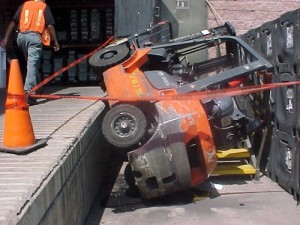 The investigative report should answer six key questions: who, what, when, where, why, and how. Fact should be distinguished from opinion, and both should be presented carefully and clearly. The report should include thorough interviews with everyone with any knowledge of the incident. A good investigation is likely to reveal several contributing factors, and it probably will recommend several preventive actions.
The investigative report should answer six key questions: who, what, when, where, why, and how. Fact should be distinguished from opinion, and both should be presented carefully and clearly. The report should include thorough interviews with everyone with any knowledge of the incident. A good investigation is likely to reveal several contributing factors, and it probably will recommend several preventive actions.
Tag: accident investigation
When Do You Conduct an Incident Investigation?
 All incidents, whether a near miss or an actual injury-related event, should be investigated. Near miss reporting and investigation allow you to identify and control hazards before they cause a more serious incident. Accident/incident investigations are a tool for uncovering hazards that either were missed earlier or have managed to slip out of the controls planned for them. It is useful only when done with the aim of discovering every contributing factor to the accident/incident to “foolproof” the condition and/or activity and prevent future occurrences. In other words, your objective is to identify root causes, not to primarily set blame.
All incidents, whether a near miss or an actual injury-related event, should be investigated. Near miss reporting and investigation allow you to identify and control hazards before they cause a more serious incident. Accident/incident investigations are a tool for uncovering hazards that either were missed earlier or have managed to slip out of the controls planned for them. It is useful only when done with the aim of discovering every contributing factor to the accident/incident to “foolproof” the condition and/or activity and prevent future occurrences. In other words, your objective is to identify root causes, not to primarily set blame.
Accident Investigation
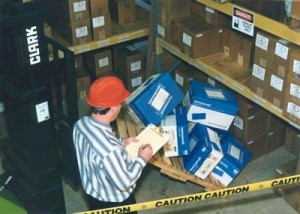 Thousands of accidents occur throughout the United States every day. The failure of people, equipment, supplies, or surroundings to behave or react as expected causes most of them. Accident investigations determine how and why these failures occur. By using the information gained through an investigation, a similar, or perhaps more disastrous, accident may be prevented. It is important to conduct accident investigations with prevention in mind.
Thousands of accidents occur throughout the United States every day. The failure of people, equipment, supplies, or surroundings to behave or react as expected causes most of them. Accident investigations determine how and why these failures occur. By using the information gained through an investigation, a similar, or perhaps more disastrous, accident may be prevented. It is important to conduct accident investigations with prevention in mind.
Benefits of Lean Safety Accident Investigations
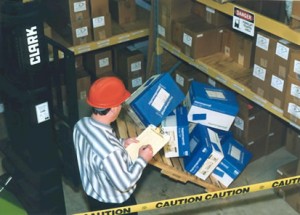 For centuries, the Japanese have promoted a philosophy of continuous improvement to all aspects of life, known as “kaizen.” In recent decades, American business leaders have started to recognize the impact kaizen has had on Japanese business competitiveness, and countless managers have adopted aspects of these techniques to improve their business processes. Now these principles can be used in workplace accident investigation asking five questions to get to the root cause instead of the traditional one question.
For centuries, the Japanese have promoted a philosophy of continuous improvement to all aspects of life, known as “kaizen.” In recent decades, American business leaders have started to recognize the impact kaizen has had on Japanese business competitiveness, and countless managers have adopted aspects of these techniques to improve their business processes. Now these principles can be used in workplace accident investigation asking five questions to get to the root cause instead of the traditional one question.
Here’s an example of how this works:
An individual was using a tape machine that automatically tapes around corners of boxes and the mechanism was
stuck in the up position. The worker pushed it down and the blade that cuts the tape came up and just barely cut the end of the worker’s finger.
The individual’s supervisor wrote up the incident report and said the root cause was the employee failed to follow lockout-tagout procedures. A lot of people would stop there because the individual agreed that he failed to follow the lockout-tagout procedure.
However, as a lean thinker, you might think that’s the root cause, but why did the worker push down that mechanism? Because it hung up. Well, why did the machine get stuck? Because either the air pressure wasn’t set right or it malfunctioned. Well, why was the air pressure not set right? Because we’re not sure what it was supposed to be set at. Some think it’s supposed to be 50 psi and others say 100 psi.
So the root cause is really that the machine hung up and people didn’t understand how to set it correctly. Because of that, we were able to assign the individual to work with maintenance to look into the manual to determine what the setting was supposed to be. Then they tested equipment to make sure that it worked correctly when it was set at the correct setting. That individual was asked to talk to their team and others in the plant that had the same equipment to ensure they understood the correct setting.
Those opportunities to improve safety would have been missed if you stopped at “The individual didn’t follow the lockout-tagout procedure.” By asking why five times — which is a lean tool — you’ll get to the real root cause so that you can improve the process rather than just focus on the person. The process is generally the problem, not the person. I fully understand that they didn’t follow lockout-tagout procedure, and I accept that, but when using lean, you have to go beyond that to get to the things you can improve.
Investigate Accidents with Prevention in Mind
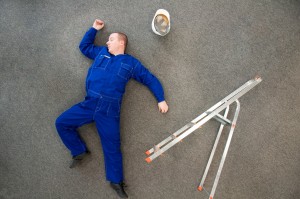 Thousands of accidents occur throughout the United States every day. The failure of people, equipment, supplies, or surroundings to behave or react as expected causes most of them. Accident investigations determine how and why these failures occur. By using the information gained through an investigation, a similar, or perhaps more disastrous, accident may be prevented. It is important to conduct accident investigations with prevention in mind.
Thousands of accidents occur throughout the United States every day. The failure of people, equipment, supplies, or surroundings to behave or react as expected causes most of them. Accident investigations determine how and why these failures occur. By using the information gained through an investigation, a similar, or perhaps more disastrous, accident may be prevented. It is important to conduct accident investigations with prevention in mind.
Accident Investigation
 Thousands of accidents occur throughout the United States every day. The failure of people, equipment, supplies, or surroundings to behave or react as expected causes most of them. Accident investigations determine how and why these failures occur. By using the information gained through an investigation, a similar, or perhaps more disastrous, accident may be prevented. It is important to conduct accident investigations with prevention in mind.
Thousands of accidents occur throughout the United States every day. The failure of people, equipment, supplies, or surroundings to behave or react as expected causes most of them. Accident investigations determine how and why these failures occur. By using the information gained through an investigation, a similar, or perhaps more disastrous, accident may be prevented. It is important to conduct accident investigations with prevention in mind.
Workplace Safety – Accident/Incident/Near Miss Investigation
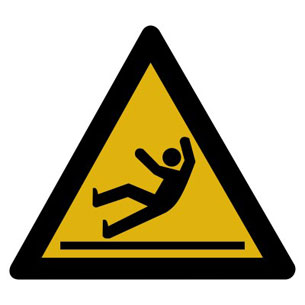 One of the best ways to avoid further accidents is to understand how an accident occurred and how to avoid that type of accident in the future. The accident investigation is a tool. The goal is not to lay blame. The goal in an accident investigation is to:
One of the best ways to avoid further accidents is to understand how an accident occurred and how to avoid that type of accident in the future. The accident investigation is a tool. The goal is not to lay blame. The goal in an accident investigation is to:
- Satisfy legal requirements (National Institute for Occupational Safety and Health? NIOSH, and Occupational Safety and Health Administration?OSHA)
- Find out what happened and determine immediate and underlying or root causes.
- Rethink the safety hazard.
- Introduce ways to prevent a reoccurrence
- Establish training needs.
- An accident, a near miss and an incident should all be investigated.
- Accident investigations are a tool for uncovering hazards that either were missed earlier or require new controls (policies, procedures or personal protective equipment).
- Near-miss reporting and investigation identify and control safety or health hazards before they cause a more serious incident.
- Incident investigations should focus on prevention.
ACCIDENT — an undesired event or sequence of events causing injury, ill-health or property damage.
NEAR MISS — near misses describe incidents where, given a slight shift in time or distance, injury, ill-health or damage easily could have occurred, but didn’t.
INCIDENT — an incident is an unplanned, undesired event that hinders completion of a task and may cause injury or other damage.
